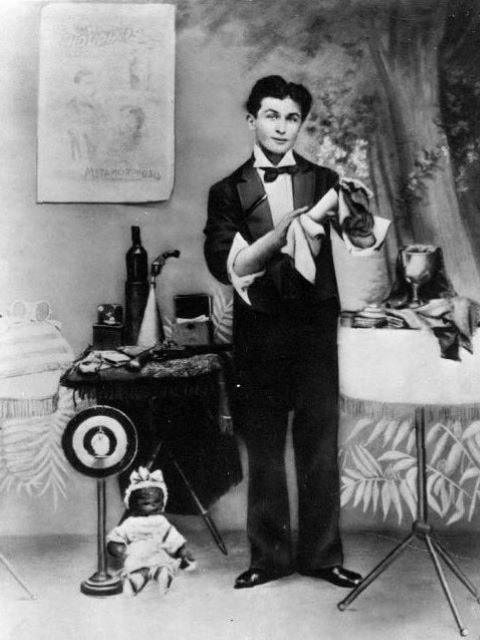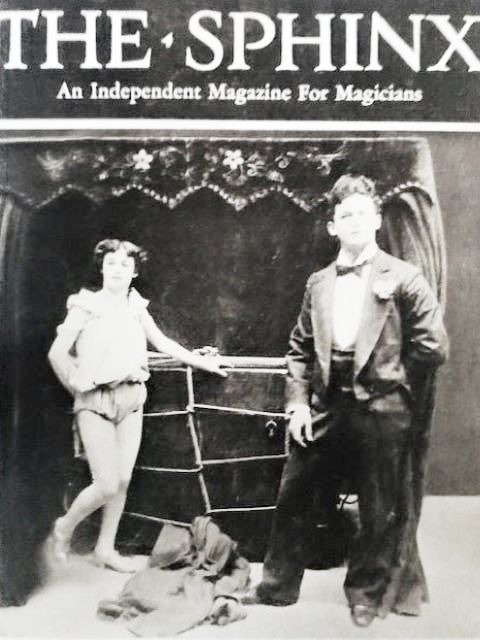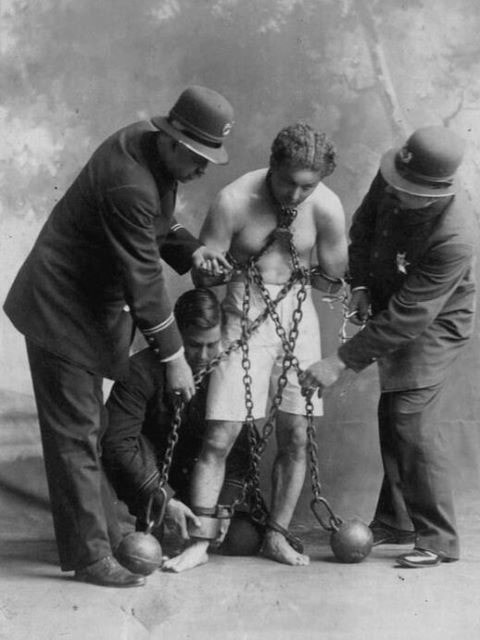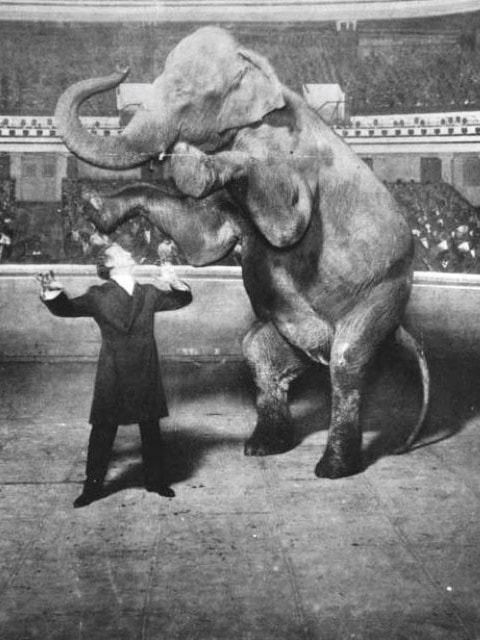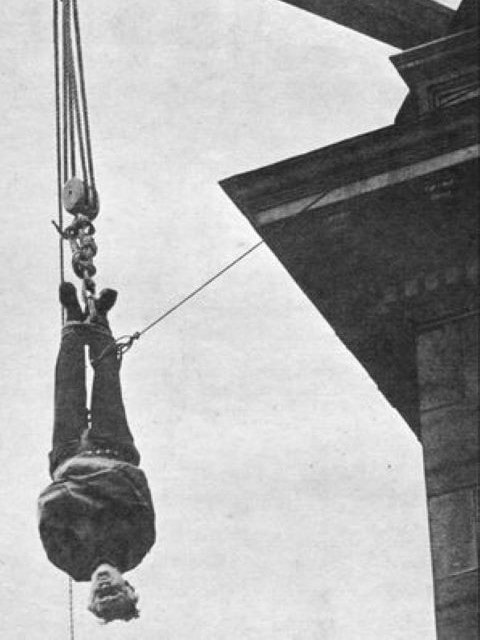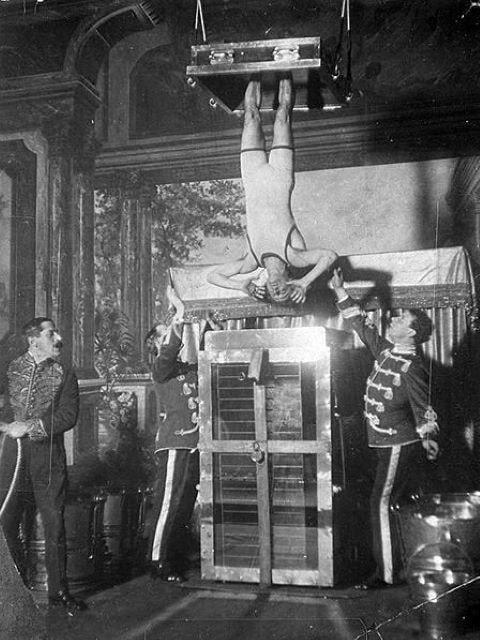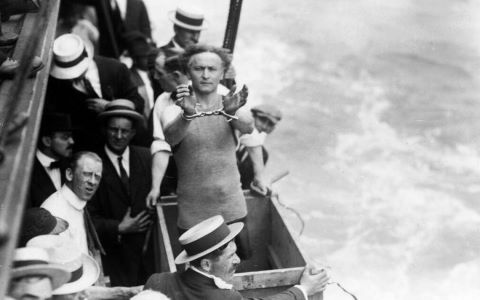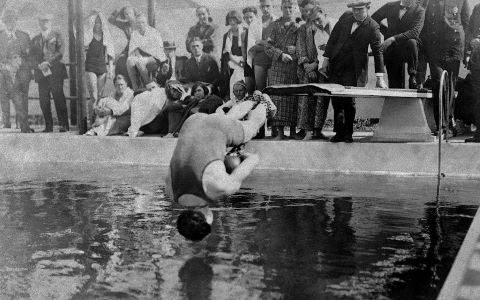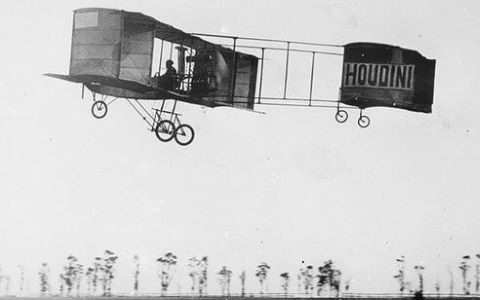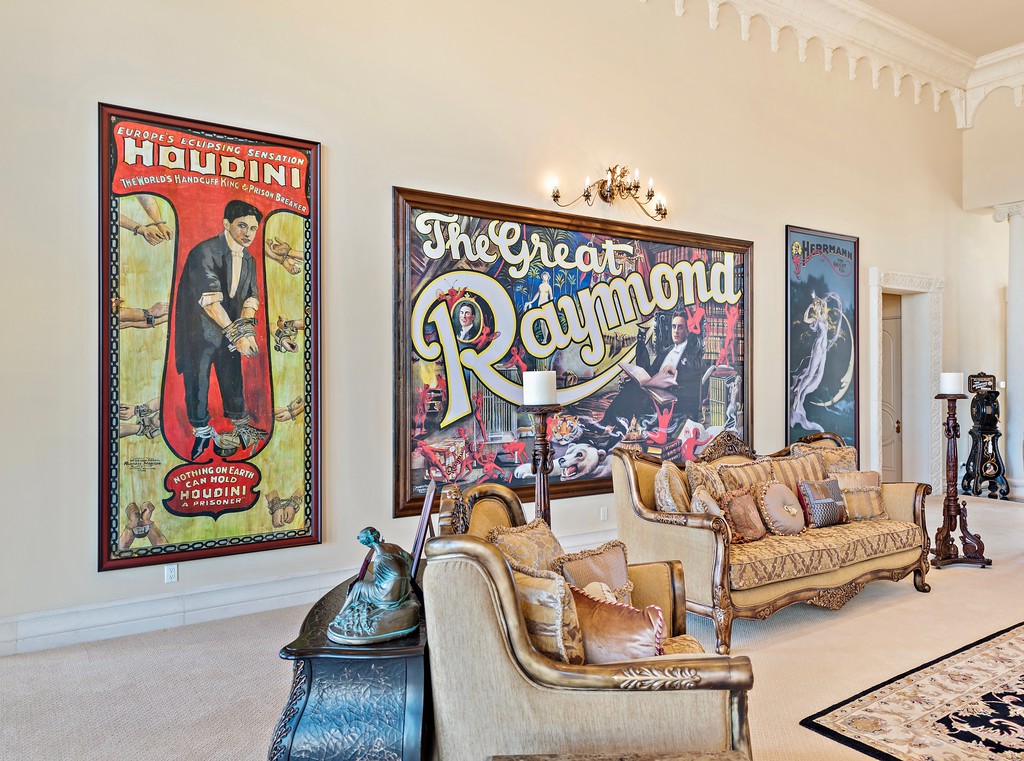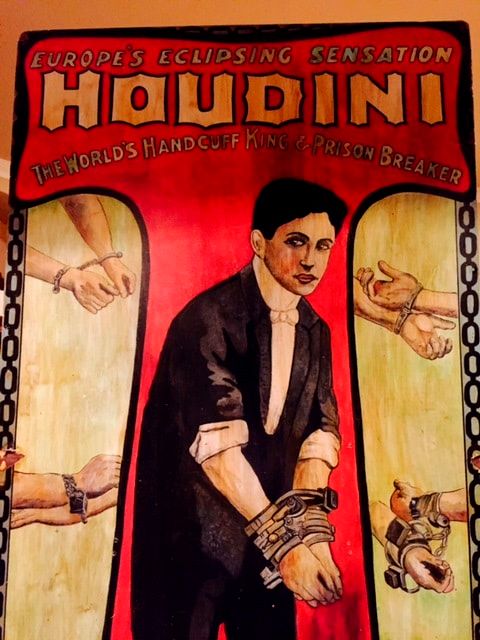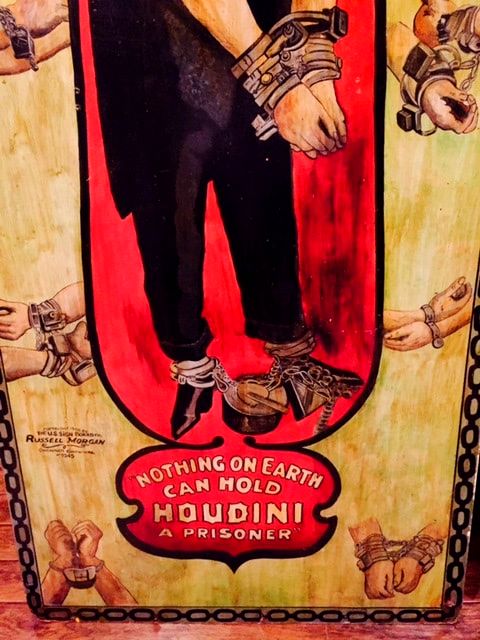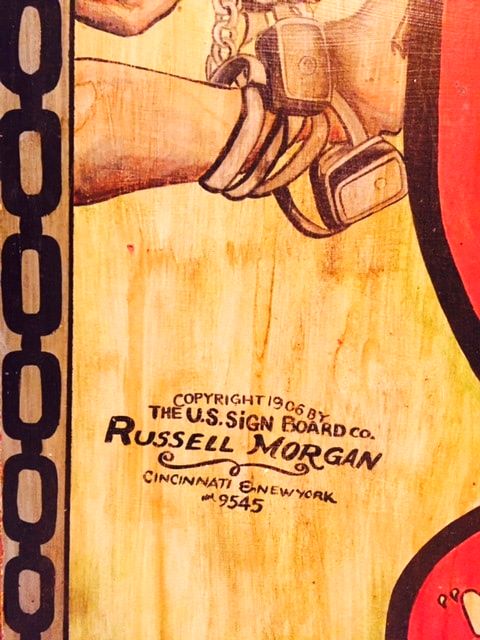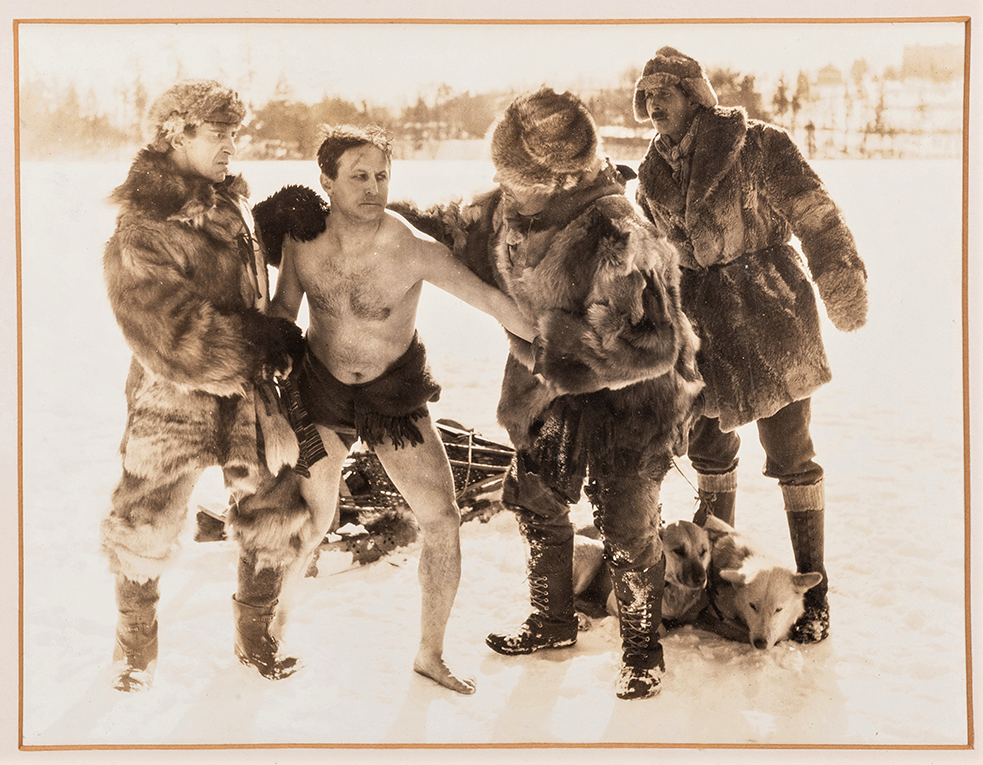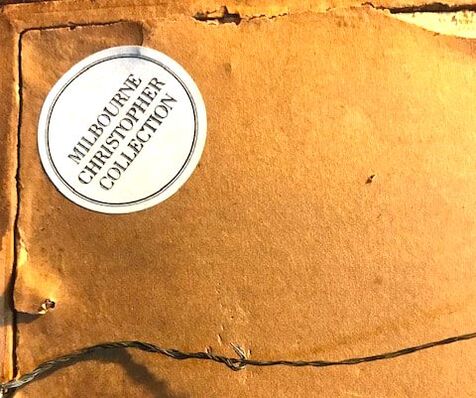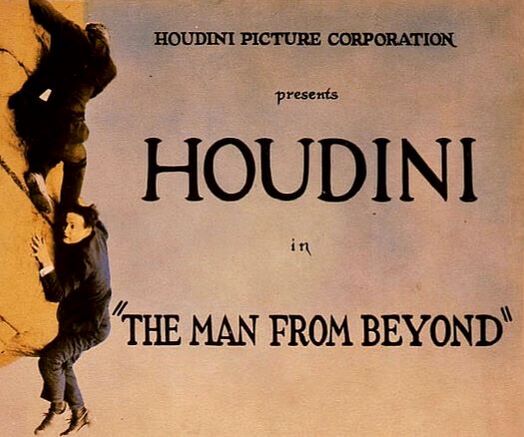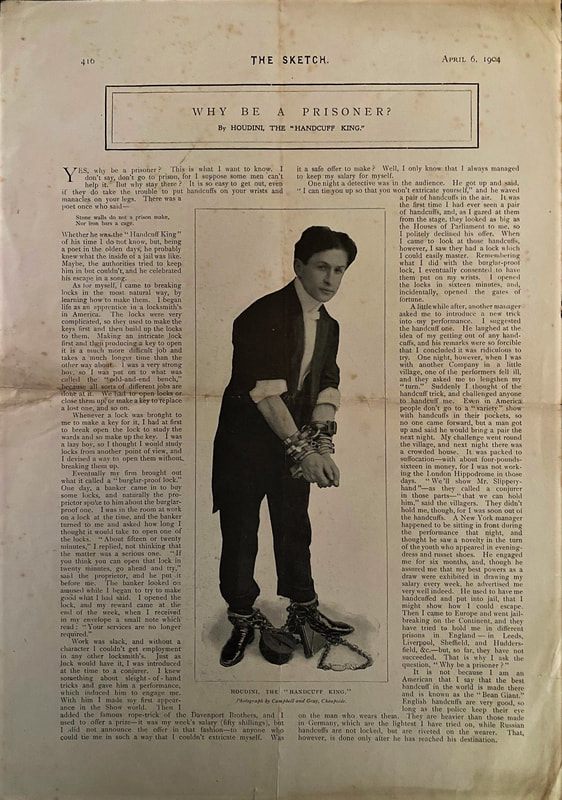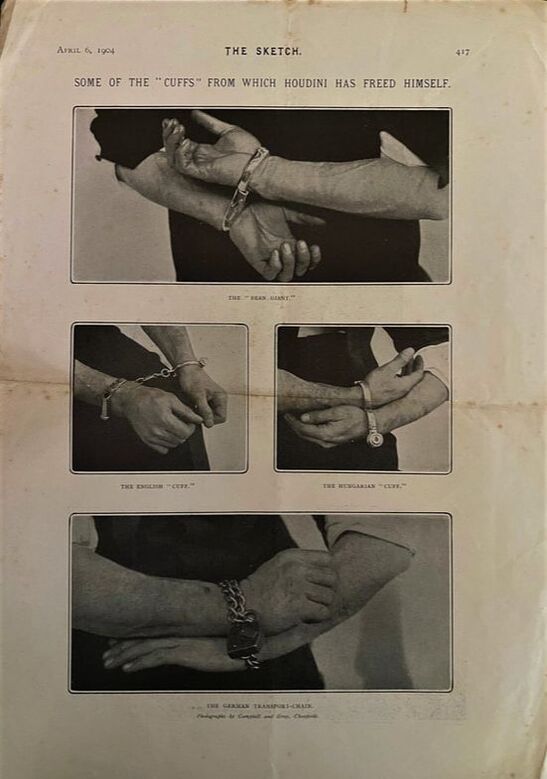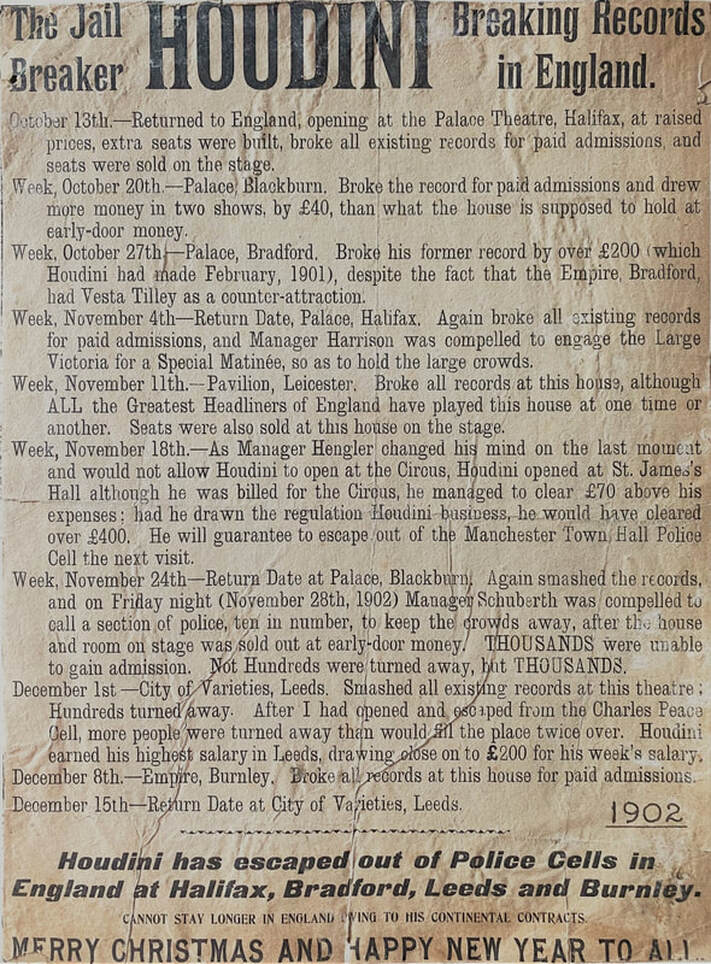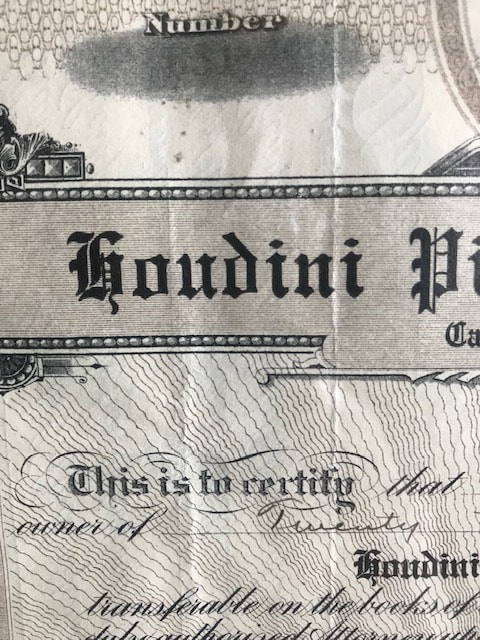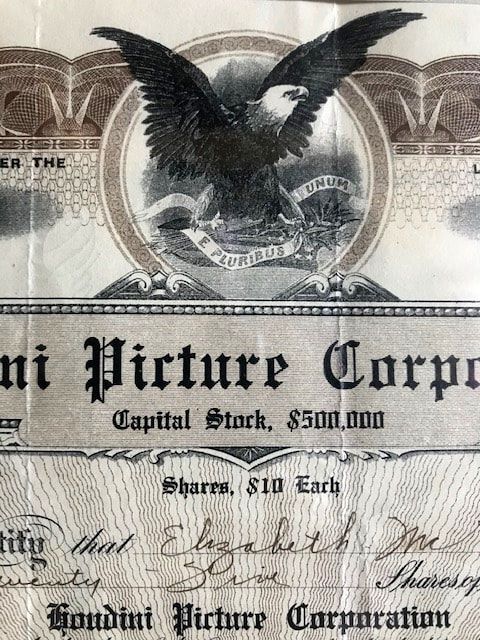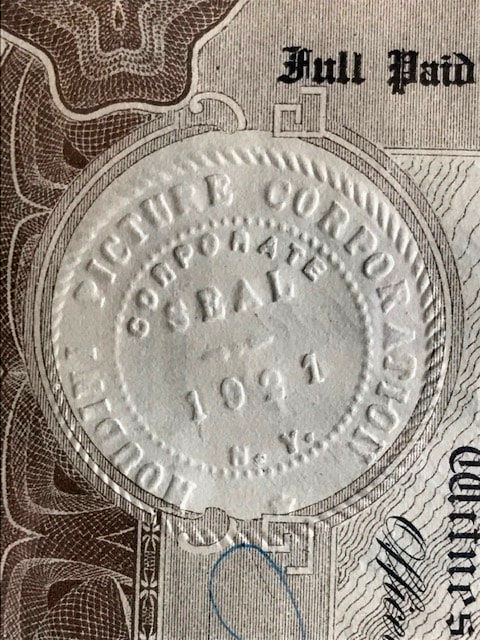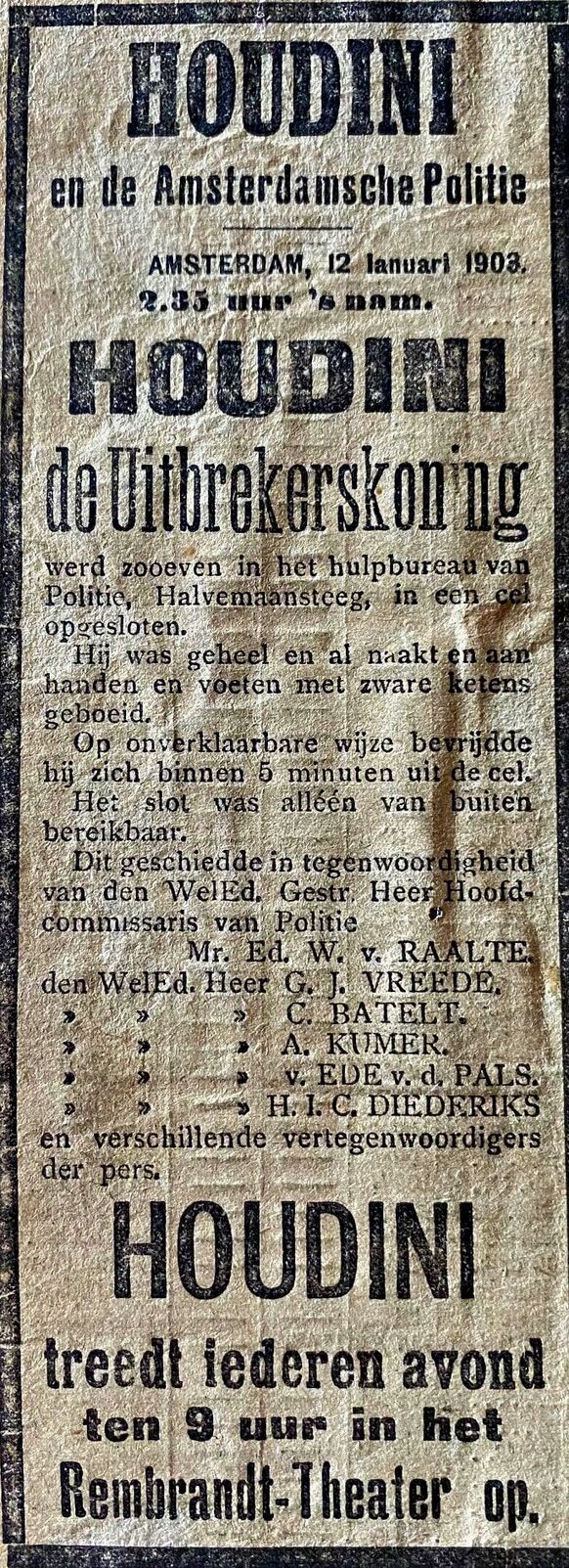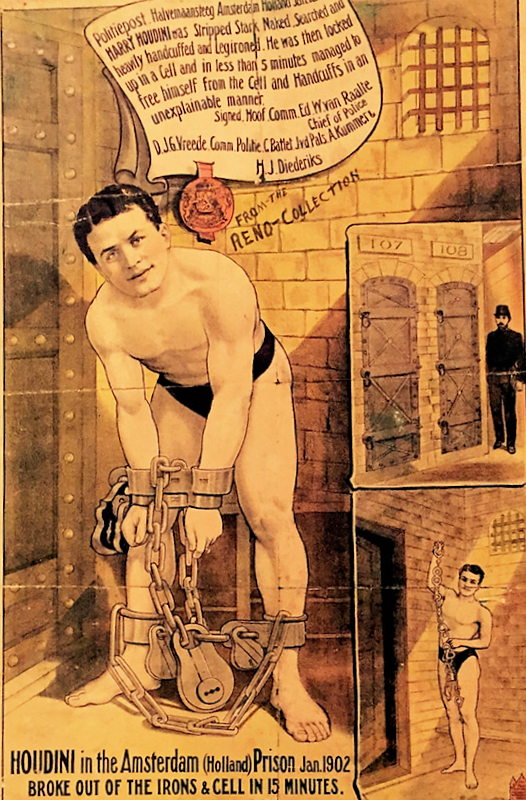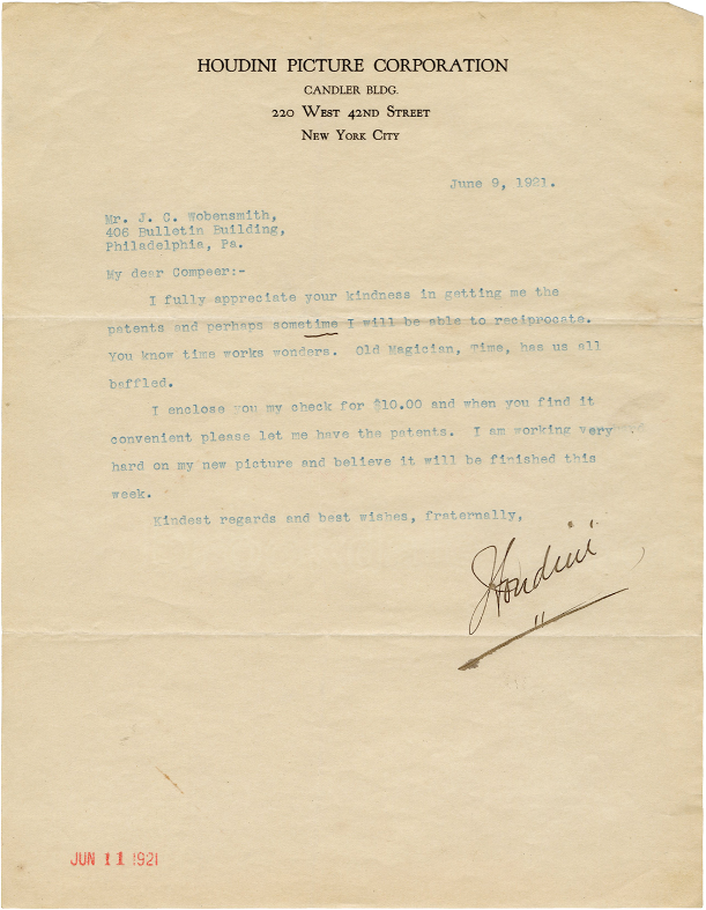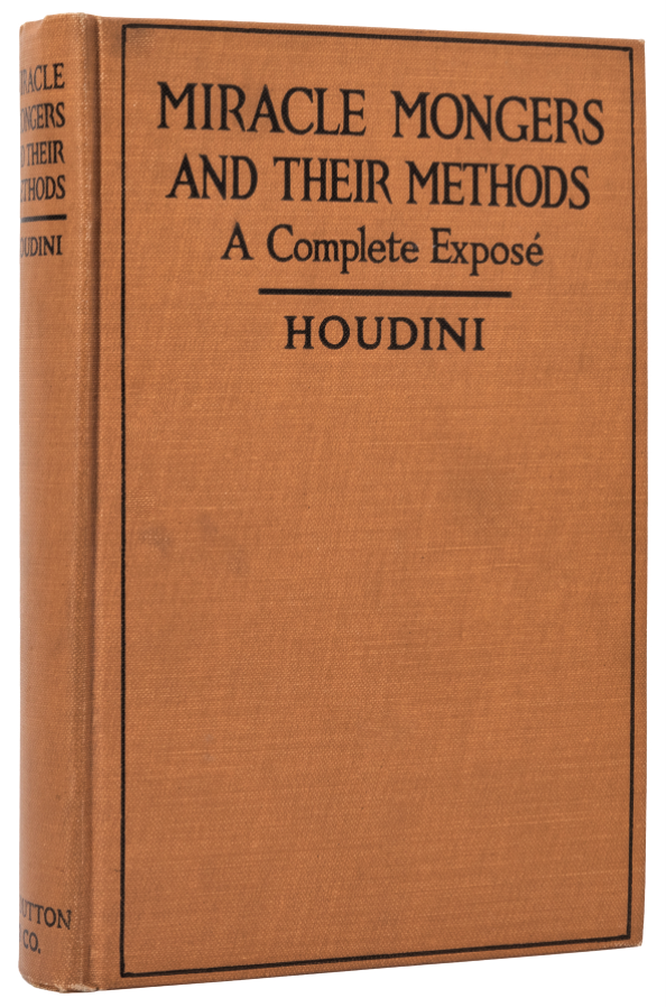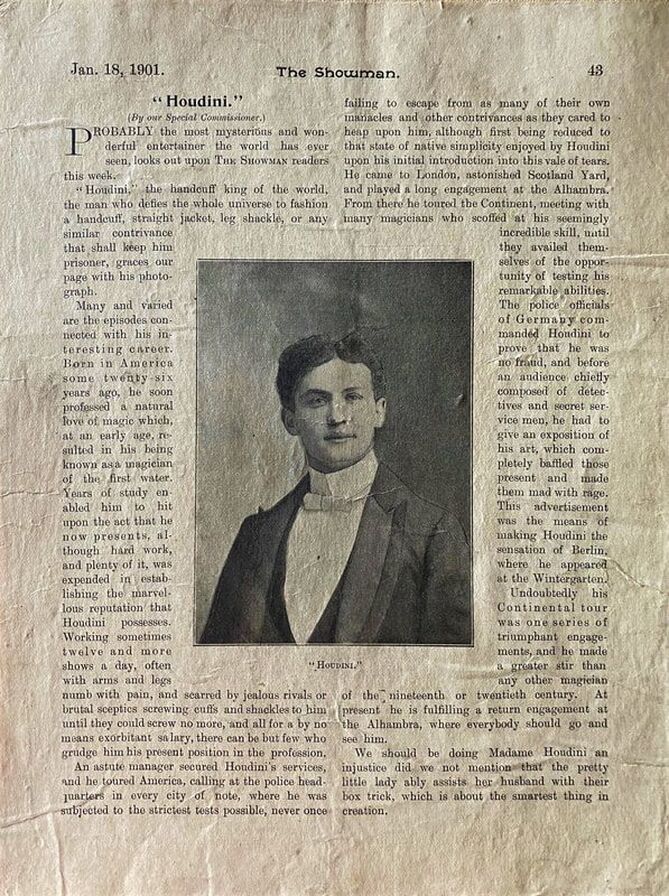Harry Houdini was born on March 24, 1874, in Budapest, Hungary, with the given name of Ehrich Weisz. He was one of seven children and the son of Mayer Weisz. Mayer Weisz immigrated to the United States in search of the American dream. He found work as a rabbi and changed his last name to Weiss. In 1876, the remainder of the family joined him in the United States. The family moved to Milwaukee, Wisconsin when Ehrich was eight years old. During his early years, Ehrich sold newspapers and shined shoes to help support the family. At the age of nine, Ehrich made his first appearance on stage, performing a trapeze act. He billed himself, "Ehrich, the Prince of the Air." It was about this time, Ehrich and his brother Theo began to pursue an interest in magic. When Ehrich became a magician, he began calling himself "Harry Houdini". Houdini claimed that the first part of his new name, Harry, was named after magician Harry Kellar and his last name after the French magician Robert Houdin, both whom he deeply admired.
At the age of 17, Ehrich, now known as Harry Houdini, left his family to pursue his magic career. By the age of twenty, Harry had been performing small acts throughout New York, but had little success. He appeared in a tent act with strongman Emil Jarrow. He performed in dime museums and sideshows and even doubled as "The Wild Man" at a circus. Houdini focused initially on traditional card tricks. At one point, he billed himself as the "King of Cards". Professional magicians would come to regard Houdini as a competent but not particularly a skilled sleight-of-hand artist, lacking the grace and finesse required to achieve excellence in that craft. He soon began experimenting with escape acts. In 1893, while performing with his brother Theo at Coney Island as "The Brothers Houdini", Houdini met a fellow performer named Bess Rahner. Bess and Houdini married in 1894, with Bess replacing Theo in the act, which became known as "The Houdinis". For the rest of Houdini's performing career, Bess worked as his stage assistant. Houdini's big break came in 1899 when he met manager Martin Beck in St. Paul, Minnesota. Impressed by Houdini's handcuffs act, Beck booked him on the Orpheum vaudeville circuit. Within months, he was performing at the top vaudeville houses in the country. In 1900, Beck arranged for Houdini to tour Europe and gave a demonstration of escape from handcuffs at Scotland Yard. He succeeded in baffling the police so effectively that he was given certificates from various wardens for escaping from their prisons and booked at the Alhambra for six months. His show was an immediate hit and Harry Houdini was quickly becoming very popular and an international star.
Eventually, Harry was able to accomplish his dream of having a full show dedicated to his magic. The Houdini shows were always sold out and his outdoor shows drew tens of thousands of onlookers who brought city traffic to a halt. The most notable of all Houdini escapes were the suspended straitjacket escape, Chinese water torture cell, milk can escape, vanishing elephant illusion, and the buried alive escape. In his later years, Harry took his talent to the film arena, where he both acted and started his own film production company named Houdini Picture Corporation. Years later, Harry would receive a star on the Hollywood Walk of Fame. In addition, Harry showed interest in the field of aviation and was the first person to ever fly over Australian soil. In the 1920s, Harry became interested in the occult, specifically in debunking mediums and psychics. His training in magic helped him expose frauds that scientists and academics could not. He chronicled his time investigating the occult in his book, A Magician Among the Spirits and also wrote several other books. Houdini was also elected nine successive times as President of the Society of American Magicians. Harry Houdini was hospitalized as a result of a ruptured appendix, after suffering a blow to the abdomen. Houdini refused to seek medical help and continued to travel and perform, eventually succumbing to peritonitis and passed away on Halloween day, October 31, 1926. Harry Houdini was only 52 years old. Headlines immediately read “Was Houdini Murdered?” Did he really have appendicitis? Was he poisoned? Why was there no autopsy? Houdini’s life insurance company investigated his death and ruled out foul play, but for many, uncertainty regarding the cause of Houdini’s death lingers. For years after his death, Bess attempted to contact Houdini through séances, but Houdini never contacted her from beyond the grave.
Below are a few of the incredible original Harry Houdini artifacts from The Torrence Collection.
1906 ORIGINAL HARRY HOUDINI U.S. SIGN BOARD CO. LOBBY DISPLAY
1906 original Houdini U.S. Sign Board Co. Lobby Display. Collector importance of the highest order. The only known example in existence. This is the documented example the lithograph is recreated from. Houdini Europe’s Eclipsing Sensation. Houdini. The World’s Handcuff King & Prison Breaker. New York, U.S. Sign Board – Russell Morgan, CA. 1906. Oil on plywood. Oversized lobby board (48 x 109”) bearing perhaps the most famous image of Houdini, used under license from the Russell & Morgan Printing Co. of Cincinnati (which would later become the US Playing Card Co.), the firm that produced the well-known stone lithograph bearing this image. At the center of the board is a full-length image of Houdini, fettered with cuffs, leg irons, chains, and locks, surrounded by eight sets of hands restrained by other handcuffs Houdini escaped from. The border is made up of painted links of chain. Professionally framed and mounted. A startling, striking and unique Houdini artifact. This treasure was formerly a part of and documented in the prominent Kevin Connolly Collection.
Exhibit History: Houdini: Art and Magic. The Jewish Museum of New York, et al. Two-year touring exhibit.
Documented in the book: Houdini Art and Magic and several other publications.
Exhibit History: Houdini: Art and Magic. The Jewish Museum of New York, et al. Two-year touring exhibit.
Documented in the book: Houdini Art and Magic and several other publications.
1921 original Houdini GELATIN PRINT from "the man from beyond" silent film
Original gelatin print still taken from the silent film The Man From Beyond, produced in 1921. Following his two-picture deal in Hollywood, Houdini returned to New York and started his own film production company named "Houdini Picture Corporation". He wrote and starred in The Man From Beyond in 1921 and released the following year. The film is a silent mystery staring Harry Houdini as a man found frozen in a block of arctic ice and then brought back to life. When Houdini returns to life, the researchers that found him do not tell him that he is 100 years behind the times, planning to study his reactions after as he returns back to civilization. The film runs 74 minutes and was distributed by Houdini Picture Corp. Houdini also founded his own film laboratory business named The Film Development Corporation, attempting to begin a new process for developing motion picture film. Houdini's brother, Theo Hardeen ended his own career as a magician to run the company. Sadly, neither Houdini's acting career or Film Development Corp. achieved much success, and he quit the movie business in 1923, complaining that "the profits are too meager". This original gelatin print was formerly a part of and documented in the Milbourne Christopher Collection and contains his collection label and annotation on the back side of the frame. Milbourne Christopher was a prominent American illusionist, magic historian, actor and author. Milbourne wrote a biography of Harry Houdini titled "Houdini: The Untold Story", he wrote a chronicle of his own craft titled "The Illustrated History Of Magic" and thousands of essays relating to magic and mentalism. Professionally framed and matted.
1904 why be a prisoner? by harry houdini - the sketch
(LEFT) April 6, 1904. The Sketch publication. "Why Be A Prisoner?" By Harry Houdini. A fascinating early insight into Houdini's career. This rare article written by Houdini, he describes his first job as an apprentice at a locksmith company and how an encounter and an event changed his young life. He goes on to describe meeting a conjurer that helped him to make his first appearance at Show World. He describes how at a show one night a detective in the audience at the show, got up a yelled "I can tie you up so that you won't extricate yourself." and you can only imagine what happened next! There are several other descriptive Houdini life changing events as well. The Sketch was a British illustrated weekly journal. It ran from February 1, 1893, to June 17, 1959. It was published by the Illustrated London News Company and was primarily a society magazine with regular features on royalty, high society, as well as theatre, cinema and the arts. The renowned British Library holds a complete run of The Sketch. A wonderful document of the events that shaped and formed the early life and career of Harry Houdini. In Harry Houdini's own words!
(RIGHT) April 6, 1904. "SOME OF THE CUFFS FROM WHICH HOUDINI HAS FREED HIMSELF." Four close-up photographs of handcuffs that Houdini has freed himself from at that time of his young career. They are as follows "The Bean Giant," "The English Cuff," "The Hungarian Cuff," and "The German Transport-Chain." Rare!
(RIGHT) April 6, 1904. "SOME OF THE CUFFS FROM WHICH HOUDINI HAS FREED HIMSELF." Four close-up photographs of handcuffs that Houdini has freed himself from at that time of his young career. They are as follows "The Bean Giant," "The English Cuff," "The Hungarian Cuff," and "The German Transport-Chain." Rare!
HOUDINI OWNED and used BEAN COBB HANDCUFFS
Early 1900s original Harry Houdini owned Bean Cobb hand restraints with key. Houdini began using handcuffs in his routines in the late 1890s. He did a variety of extremely dangerous escapes using hand restraints such as the Chinese water torture cell and the buried alive escape. Houdini was widely referred to as the "Handcuff King". Wonderful worn patina and in working order. Length approximately eleven inches. An incredible and special Houdini example.
1902 Houdini Breaking receords in england advertisement
1902 original advertisement "The Jailbreaker HOUDINI Breaking Records in England." Rare advertisement of Houdini record-breaking runs at various theatres in England. The incredible theatres include Palace Theatre Halifax, Palace Blackburn, Palace Bradford, and Pavilion Leicester. These records were for paid attendance and many of the records broke were Houdini's own previously held records. Thousands of people had to be turned away! A very interesting and special valuable from the marketing genius Harry Houdini.
1921 original Houdini Picture Corporation stock certificate - signed by Harry Houdini
Legendary Harry Houdini starred in five films. The first three were "The Master Mystery" in 1918, "The Grim Game" in 1919 and "Terror Island" in 1920. Houdini enjoyed the experiences of starring in those films but wanted to have more creative control. He then started his own film production co. named Houdini Picture Corporation. The Houdini Picture Corp. began with a $500,000 capitalization. Money invested by Houdini himself and friends. Over the next two years, Houdini made and starred in two more films, named "The Man From Beyond" in 1921 and "Haldane and the Secret Service" in 1923. Houdini received his star on the Hollywood Walk of Fame for these works and his contributions in these films. This is an original stock certificate signed by Harry Houdini as company president. The signature is light because it was brown ink on brown printing. However, the signature can clearly be read, along with the signature of the treasurer of the corporation. A sharp, clear deeply embossed “Houdini Picture Corporation” Seal impression at the lower left is also in near mint condition. This stock certificate is numbered 631 for 25 shares and issued to Elizabeth McGeary, dated July 30, 1921. An incredibly rare piece of Houdini history, motion picture history and financial history.
1903 houdini the breakout king and the amsterdam police - Rembrandt Theater
(LEFT) January 12, 1903, original Amsterdam advertisement "HOUDINI The Breakout King and the Amsterdam Police". An extremely rare Dutch advertisement of Houdini as he takes on the Amsterdam police while performing at the famous Rembrandt Theater in Amsterdam. It was also reported that Houdini escaped the police station in Halvemaansteeg on the same date. The Rembrandt Theater was in operation from 1902 to 1943 as a cinema and theatre on Rembrandplein in Amsterdam. It was beautiful and built-in art nouveau style. A fantastic time stamp of Houdini overseas!
(RIGHT) The rare poster advertising Houdini's Amsterdam prison break on January 12, 1903, which matches identically the advertisement date to the left and the name of Chief of Police, Ed. W. V. Raalte. What's also interesting about the rare poster is it contains an error. The text at the top of the poster says the escape took place in 1903, but the text below reads 1902. Regardless a fantastic Houdini poster verifying the January 12, 1903, that matched the Houdini Amsterdam advertisement. (The poster on the right is for informational and for a reference purpose only and not a part of The Torrence Collection.)
(RIGHT) The rare poster advertising Houdini's Amsterdam prison break on January 12, 1903, which matches identically the advertisement date to the left and the name of Chief of Police, Ed. W. V. Raalte. What's also interesting about the rare poster is it contains an error. The text at the top of the poster says the escape took place in 1903, but the text below reads 1902. Regardless a fantastic Houdini poster verifying the January 12, 1903, that matched the Houdini Amsterdam advertisement. (The poster on the right is for informational and for a reference purpose only and not a part of The Torrence Collection.)
1921 original Houdini signed letter on Houdini picture corp. letterhead
Extremely rare and original typed letter on Houdini Picture Corp. letterhead signed by Harry Houdini in New York: June 9, 1921. Addressed to J.C. Wobensmith, reads in part regarding patents Wobensmith provided, in part: “…perhaps sometime I will be able to reciprocate. You know time works wonders. Old Magician, Time, has us all baffled,” and relates that his current film (The Man from Beyond) "will be finished this week.” 11 x 8 ½”. A very scarce artifact of Houdini history and motion picture history. Formerly a part of and documented in the Milbourne Christopher Collection. Milbourne Christopher was a prominent American illusionist, magic historian, actor and author. Milbourne wrote a biography of Harry Houdini titled "Houdini: The Untold Story". He wrote a chronicle of his own craft titled "The Illustrated History Of Magic" and thousands of essays relating to the craft of magic and mentalism.
1920 miracle mongers and their methods: HARRY HOUDINI
Harry Houdini: Miracle Mongers and Their Methods. A Complete Expose. New York: E.P. Dutton, 1920. First Edition. Following the death of his mother in 1913, Houdini began to investigate spiritualism and "soon became an all-out crusader against it. Later, he began lecturing throughout the United States on fraudulent mediums. In city after city, he attended séances in disguise, exposing frauds on the spot and sometimes securing their arrest, aided by his personal squad of detectives. Houdini, who was a collector of notebooks, manuscripts, and artifacts related to magic and illusion, divulges the "modus operandi of fire-eaters, heat resisters, poison eaters, venomous reptile defiers, sword swallowers, human ostriches, and strong men." With photographic frontispiece portrait of Houdini.
1901 houdini - the showman
January 18, 1901. "Houdini." The Showman weekly periodical. Written by The Showman's special commissioner. The first paragraph states it very well "Probably the most mysterious and wonderful entertainer the world has ever seen, looks out upon The Showman's readers this week. "Houdini," the handcuff king of the world, the man who defies the whole universe to fashion a handcuff, straight jacket, leg shackle, or any similar contrivance that shall keep him prisoner, graces our page with his photograph." A rare and brilliant retrospective read in the early part of the legendary career of Houdini.
